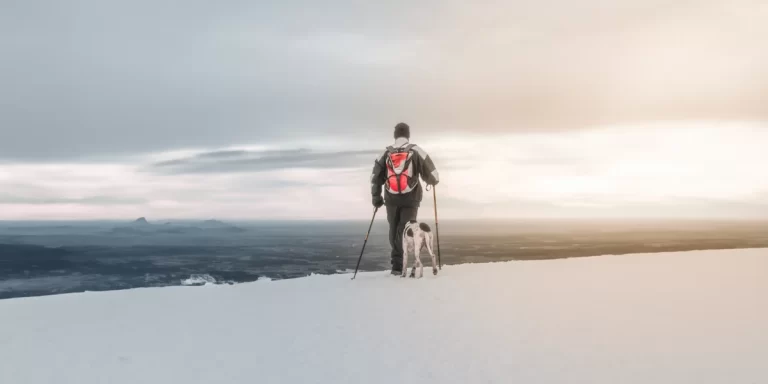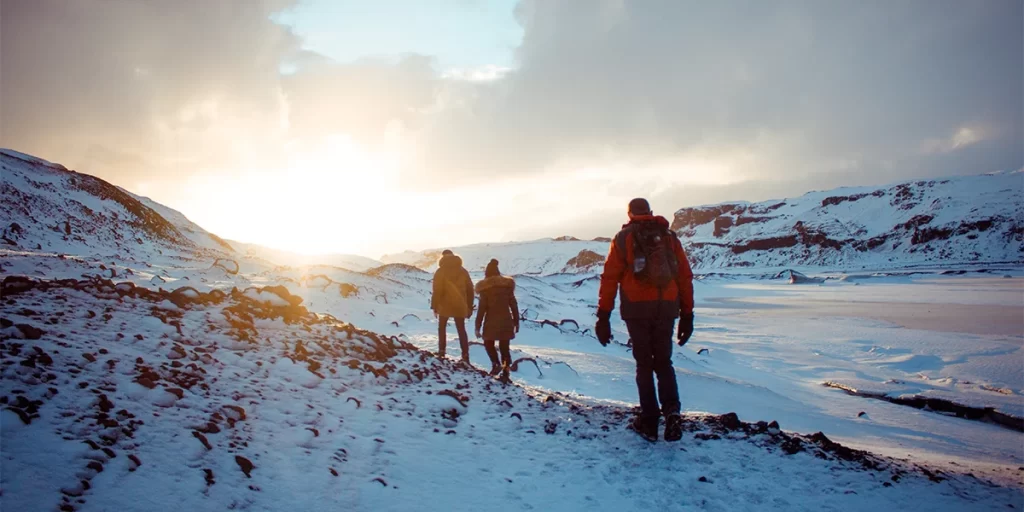

Winter hikes can be amazing, but staying warm is key, and one vital piece of gear is often overlooked: winter hiking pants.
In this post, we’ll explore the world of winter hiking pants, and help you choose the right ones for a cozy cold-weather trek.
Interested? Let’s get started.
When it comes to choosing the right winter hiking pants, it’s important to know that there’s a variety of options available:
1. Softshell Pants: Softshell pants are versatile, known for their flexibility, breathability, and resistance to wind and water.

They offer a comfortable fit and are usually suitable for use in cold weather, ranging from 30°F (-1°C) without a baselayer to 10°F (-12°C) with a light baselayer.
2. Ski Pants: Ski pants from nylon and polyester are designed for winter sports and provide excellent insulation. They are often bulkier but offer superior warmth and protection.

In fact, with a good baselayer, most high-quality ski pants can be used comfortably in extremely cold conditions, even as low as -22°F (-30°C).
3. Winter Tights: Winter tights, often with a fleece lining and wind-resistant outer fabric, are a lightweight option. They are suitable for milder winter conditions or high-intensity activities.

With winter tights, it’s important to be cautious about what the manufacturer considers ‘winter,’ but most high-quality ones can handle temperatures down to 25°F (-4°C).
4. Alternative Options: Some winter hikers opt for unconventional choices, such as running leggings, jeans with thermal layers, or summer hiking pants with added insulation.
It’s difficult to assess anyone’s alternative setup, but the winter options mentioned above are designed for a reason. I wouldn’t recommend taking a DIY setup in temperatures below 30°F (-1°C), as it can lead to getting wet and encountering unforeseen issues.

When shopping for winter hiking pants, focus on these key features for cold-weather comfort and performance:
Next to these key features, also consider additional features that can elevate your next trip even further:
In conclusion, winter hikes are beautiful, but staying warm is crucial, and that’s where winter hiking pants come in. We have explored various options, but it ultimately depends on the temperature.
Opt for tights in relatively warm weather, softshell pants in moderate cold, and ski pants for extreme cold. Alternative options are best avoided unless you’re experienced. Remember, the right baselayer becomes increasingly important as the temperature drops.
As you prepare for your next winter adventure, keep in mind that the right pants can make all the difference in keeping you warm and comfortable.
Looking for an ultralight baselayer? Check out our TOP 5 guide for the lightest options for both men and women.
When hiking in winter, selecting the right pants is crucial for comfort and safety. Opt for insulated hiking pants designed to keep you warm in cold temperatures. Look for materials that offer water resistance to keep you dry in light rain or snow. Windproof pants are essential to protect against biting winds, especially on exposed trails. Prioritize breathability to prevent moisture buildup from sweat during strenuous hikes. Ensure a good fit and mobility with features like pre-shaped knee sections and elastic areas. Adjustable cuffs accommodate various footwear styles. Pockets, especially secure zippered ones, come in handy for storing essentials like maps, phones, or snacks. Additionally, consider the weight and packability of the pants for longer hikes, and for safety in low-light conditions, choose pants with reflective elements.
Absolutely, thermals are a crucial addition to your winter hiking attire. These specialized base layers offer vital insulation, moisture-wicking capabilities, and temperature regulation. By trapping body heat and wicking away sweat, thermals keep you comfortably warm without overheating during your hike. They also play a pivotal role in the layering system, allowing you to adjust your clothing as needed to stay cozy. With various weights available, you can choose the right thermal for the conditions, making them a versatile and comfortable choice for winter hiking.